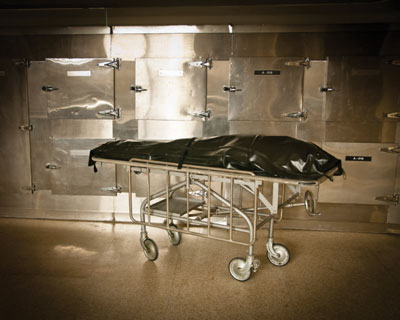
After being pronounced dead early Sunday morning, a 20-year-old woman was taken to a Detroit funeral home to await embalming and get her ready for her final resting place in the grave.
She was literally all zipped up in a body bag as they’ve done thousands of times.
But as it turns out, she wasn’t dead after all.
According to the Detroit Free Press, Timesha Beauchamp, a 20-year-old from Michigan, was in the care of paramedics after they responded to a 911 call about Beauchamp was not breathing.
They performed CPR and tried to revive her. But after 30 minutes they concluded she likely was no longer alive.
Following all necessary procedures, the paramedics and a local emergency department physician pronounced Beauchamp dead.
The body was then released to her family to make funeral arrangements. That’s when the funeral home received the body.
James H. Cole Funeral Home in Detroit confirmed it picked up the body hours later. But at the funeral home, employees saw her chest was rising and falling and the wo-man was still breathing.
They called EMS, and the woman was taken to the hospital for treatment.
Our body can resist many forms of trauma, fight through a lack of nourishment, and take on harsh outer conditions, but without the ability to breathe in oxygen, we’re effectively dead within a few moments.
Normally, after five to ten minutes of not breathing, you are likely to develop serious and possibly irreversible brain damage and of course death. The one exception is when a younger person stops breathing and also becomes very cold at the same time. This can occur when a child is suddenly plunged into very cold water and drowns. In this situation, survival after more than 30 minutes has been known to occur.
In the 1986 case of Michelle Funk, this was proven. The 2-year-old girl was sub-merged in icy water for over an hour but, in a turn of events described as “miraculous” by the American Medical Association, she survived.
Even more incredible: She survived with all brain function seemingly intact. The case seems to refute all assumptions about oxygen deprivation, but scientists point to the extreme cold as the variable that allowed Michelle to survive.
This also occurred in St. Louis to a teenager that was depicted in the 2017 film, Breakthrough. The film tells the true story of a St. Louis 14-year-old boy, John, who slipped through an icy lake in January 2015 and was underwater for 15 minutes before resuscitative efforts were started.
John had no pulse and wasn’t breathing when he was pulled from the 40-degree water. And even 30 minutes after that, he was pronounced dead. But he is alive and well now with full brain function.
Beaucamp’s ordeal began between 7:30 a.m. and 8 a.m. She had apparently suffered a seizure, even though initial reports said she suffered a heart attack.
As a result of Beauchamp’s cerebral palsy, the family usually helps Beauchamp eat and get ready for the day. But it was when the EMS arrived that everything became fishy.
At 11:30 is when the funeral home received the body and when they unzipped the body bag is when they found her chest going up and down.
Imagine the surprise of the staff employee who found the body.
The staff was fully ready to begin the embalming process. With embalming, the body is injected with formaldehyde. If injected into a person, formaldehyde can cause red blood cells to rupture, and it can also lead to a condition called acidosis, in which a person has too much acid in their blood, Hoyte said.
This latter effect occurs because one of the biproducts of formaldehyde is an acid (called formic acid).
Acidosis can cause numerous health problems, including organ dysfunction, because the body’s normal processes can’t work properly with too much acid around, Hoyte told Live Science.
Dr. Lewis Nelson, chairman of emergency medicine at Rutgers New Jersey Medical School who was also not involved in the case, said that formalin in the body “is very dangerous to all living tissues and would disrupt the function of nearly every living organ.” If this case indeed happened, the outcome of death “is fully predictable,” Nelson told Live Science.
Thank God that didn’t happen to Beauchamp. Obviously, there’s a reason why she’s still here.
And that’s the real blessing.
Posted on August 26, 2020 Gemma Greene, BDO Staff Writer


Be the first to comment